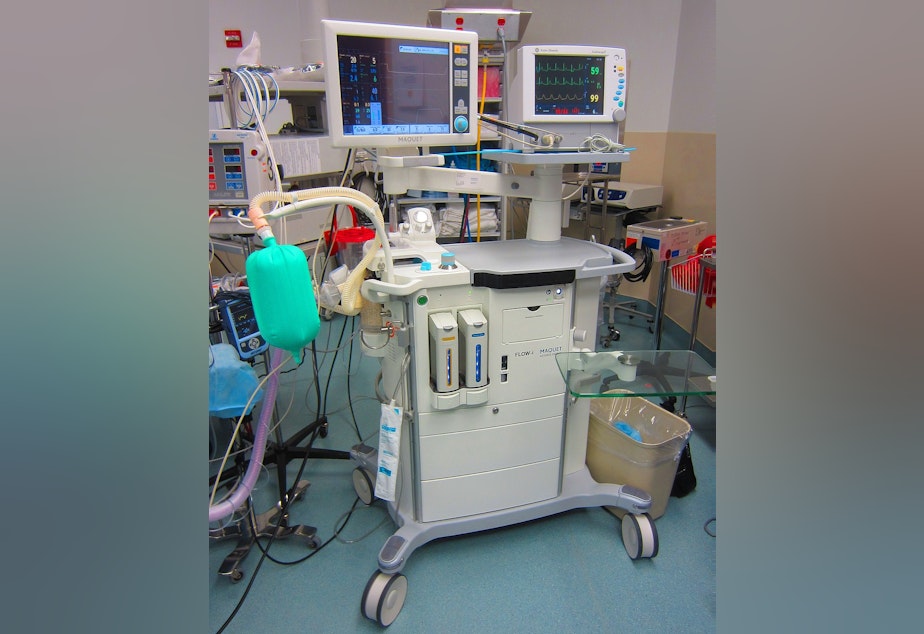Seattle hospital puts patients under without overheating the planet

Doctors at Seattle Children’s Hospital say they’ve managed to tame one of the hospital’s biggest environmental impacts.
The gases used to sedate patients are extremely powerful at trapping heat and disrupting the global climate.
A puff of nitrous oxide traps 310 times more heat than the same amount of carbon dioxide, the main pollutant responsible for overheating the world. The anesthetic desflurane traps 2,540 times more heat than carbon dioxide.
Anesthesiologists at Seattle Children’s report cutting the impact of their anesthetic gases on the climate by 87% in the past five years.
Emissions of knockout gases like desflurane and nitrous oxide were Seattle Children’s third-biggest cause of climate harm.
Anesthesiologist Liz Hansen pushed for the hospital to stop using desflurane, its most harmful gas, and to let less of the other gases leak into the atmosphere.
Sponsored
While some medications are metabolized—chemically transformed by the body—anesthesia patients exhale the gases exactly as they were inhaled.
“They really just end up vented out the roof, where they go into the atmosphere and are greenhouse gases,” Hansen said.
“One of the things that motivates me as a physician is the oath that we all take to do no harm,” Hansen said. “The care that we provide actually is contributing to global warming and pollution, and that is having a direct impact on children and people all over the world.”
Children’s has stopped using desflurane and taken steps to reduce other anesthetic gases going to waste.
Some nitrous oxide—which both heats the planet and depletes the ozone layer—still wafts toward the sky from the hospital.
Sponsored
Like many hospitals, Children’s has a centralized system of pipes for distributing nitrous oxide throughout the hospital. Hansen said those systems often leak 90% of the gas before it reaches a patient.
Children’s is working to decommission its nitrous oxide piping in favor of individual tanks that can be turned off between patient uses.
“We can provide incredibly safe, effective good anesthesia care with lower emissions,” Hansen said. “Those things are not incompatible.”
Anesthesiologists at Providence hospitals in Oregon reduced their emissions of anesthesia gases 95% from 2016 to 2020 and saved their hospitals 70% on purchases of those gases in the process.
“Desflurane, bottle for bottle, is twice as expensive as the alternatives,” Providence anesthesiologist Brian Chesebro said in a 2021 interview.
Sponsored
Chesebro said the health impacts of health care-generated pollution are the same order of magnitude as the impacts of preventable medical errors.
“Our disproportionate U.S. health care footprint is yet another medical error of sorts,” Chesebro said.
The World Health Organization and the editors of 200 medical journals consider climate change to be the greatest threat to human health in the 21st century.
“Children are more vulnerable, and they're bearing more of the brunt of this problem,” Hansen said. “So I think it's on the minds of those of us in health care who take care of children more.”
Children’s hospitals tend to use more anesthetic gases than other hospitals. MRIs and prolonged procedures that adults can sit through without wiggling often require anesthesia for younger patients.
Sponsored
Hansen has started a national network to try to get children’s hospitals nationwide to reduce the planetary harm done when they put patients to sleep.




